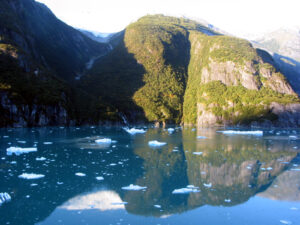This may be known as the winter of collapsed roofs. From stadiums to shopping malls throughout

the U.S., blizzard conditions caused roofs to bend, bow and break under the weight of record accumulations of snow. It almost makes one wonder if global warming is being overtaken by global cooling.
“We’re overdue for an ice age,” says astrophysicist Hugh Ross, Ph.D., founder of Reasons to Believe. Dr. Ross cites ice core samples taken as much as three kilometers deep in Antarctica and Greenland that reveal a regular pattern for the onset of glacial periods.
As the Earth orbits the Sun, there are deviations in Earth’s orbit and the tilt of its axis that affect the climate. “There are variations every 100,000 years, and that’s why we have ice ages interspersed with warm interglacials,” Dr. Ross explains. “It’s typically 90,000 years of ice and 10,000 years of warm.”
“Global warming is real, but the cause is not quite clear,” Dr. Ross says. “There is a human component and there is also a natural component.”
Dr. Ross believes global warming has held off the onset of the next ice age. “It is because of human activity in agriculture that began about 10,000 years ago that we’ve been able to put off the next ice age for about 5,000 years,” he says.
One of the earliest examples of man-induced warming happened after the Romans cleared North Africa of timber and used its plains as a grain belt to feed a hungry population. “What is now the Sahara desert fed the Roman Empire,” Dr. Ross notes. “Because they stripped the land of wood for fuel the Sahara desert is 10 times bigger than it was during the Roman Empire.”
Clearing land for crops and pastures, extensive rice cultivation, and increased cattle production all contributed to an increase in greenhouse gasses that affected the climate. Because carbon dioxide and methane efficiently trap the sun’s heat, Earth’s surface began to warm. “Fossil fuels are really one of the more minor causes of global warming,” he notes.
Dr. Ross believes human activity may have contributed anywhere from 20 to 80 percent of the total warming. “We don’t have the data to really determine to what degree it’s natural or human induced.”
In an ironic twist, while global warming seems to have delayed the next ice age, it could eventually accelerate global cooling – a process that may be underway. “There is some evidence that global warming could hasten the onset of the next ice age,” Dr. Ross says. Because the Arctic ice cap has shrunk significantly, the concern is that fresh water flowing in the North Atlantic could impact the Gulf Stream.
“There are models being developed right now about whether global warming leads to a shut down of the Gulf Stream,” he notes. “If that happened it would bring on a pretty quick ice age. It could get really cold in parts of northern and central Europe.”
The next ice age would make recent blizzards look tame. During the last ice age, ice several thousand feet thick covered Canada, and extended as far as California, according to Dr. Ross. Minnesota, the Dakotas, and New York will be covered by ice. “Once the ice gets in place, it lasts for several thousands of years.”
Dr. Ross is currently working on a book about climate change that will take its inspiration from the Book of Job for help in guiding humanity toward better stewardship of the Earth. “When God created Adam and Eve, He gave us a planet with optimized precipitation patterns,” he says. “Because of human abuse, we have disturbed that.”
In his book, Dr. Ross will call for a careful replanting strategy for the Sahara desert. “If we could replant the Sahara desert, the vegetation would soak up huge quantities of greenhouse gases and would provide food for hungry African nations.”
“If we follow God’s advice from the Bible, it’s a win-win.”



